The sugar palm, a specialty of Vietnam’s An Giang border region, grows abundantly in Tinh Bien town and Tri Ton district. These trees grow slowly during their early years but accelerate in growth later on. It takes over 20 years before a sugar palm tree produces sweet sap and fruit.
For generations, the sugar palm has been intertwined with the material and spiritual life of the Khmer people. Beyond producing sap for sugar and fruit for food, the tree’s trunk is used for construction and handicrafts, and its leaves serve as fuel.
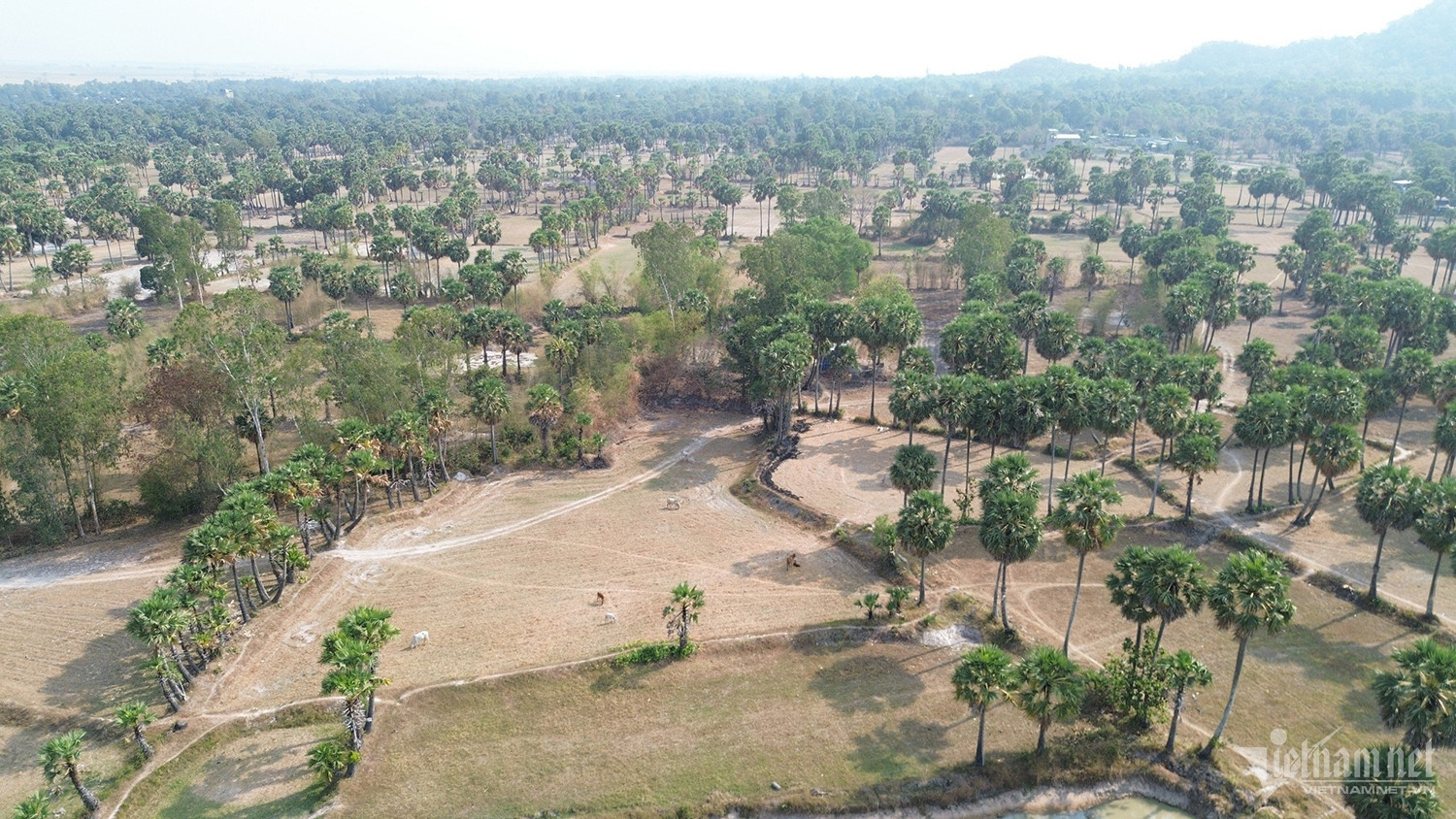
With sun-darkened hands and a sweat-drenched face, Nguyen Ba Tong (56, of An Phu Ward, Tinh Bien town) grips a handmade ladder and climbs nearly 15 meters up a tree. Seated on a sturdy frond, he collects the precious sap.
To harvest sugar palm sap, Tong scrapes the surface of the flower stalk in the afternoon to encourage sap flow. A plastic container is placed to catch the milky-white, fragrant droplets. Once full, the container is swapped out, and the sap is gathered into 30-liter cans.
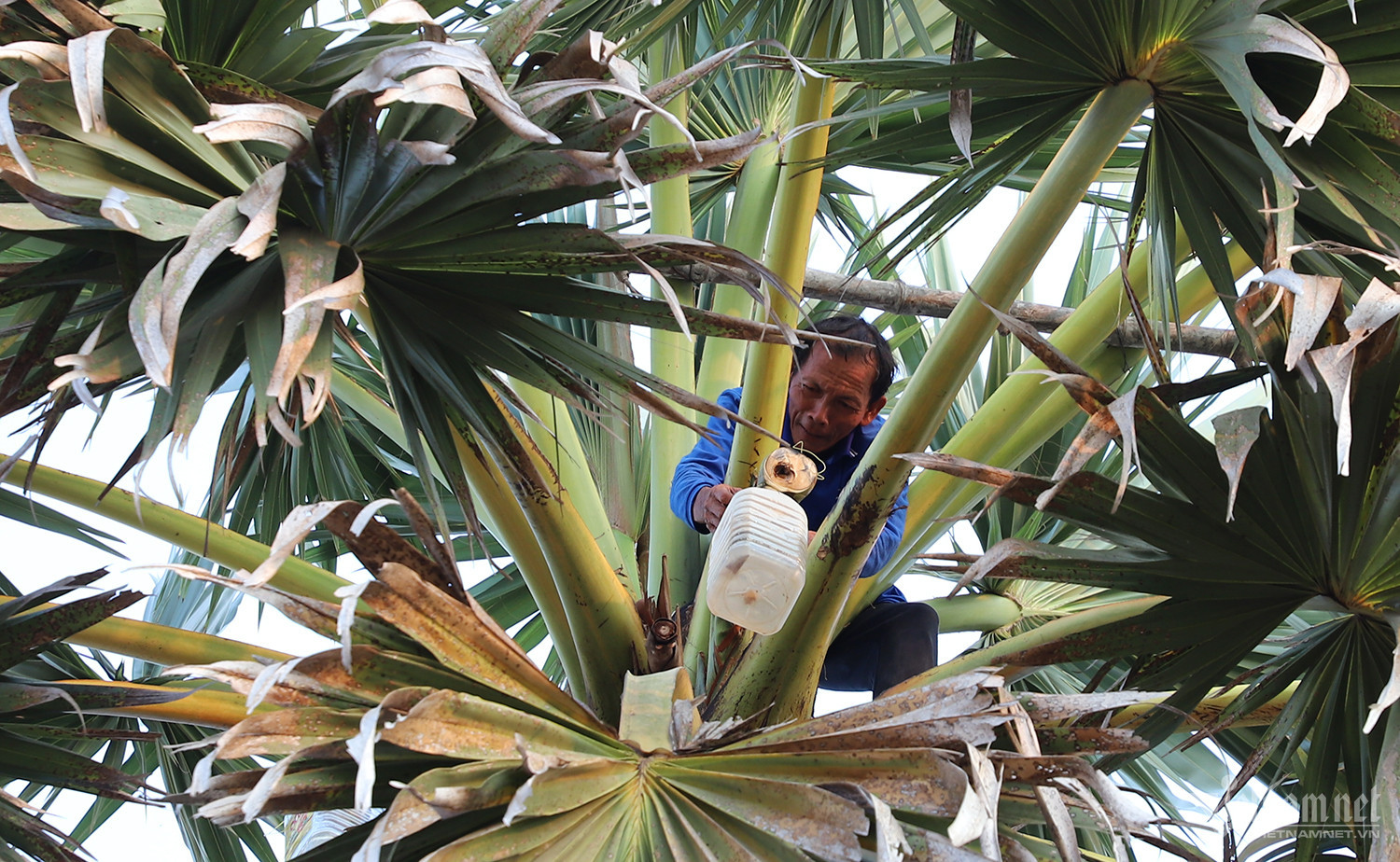
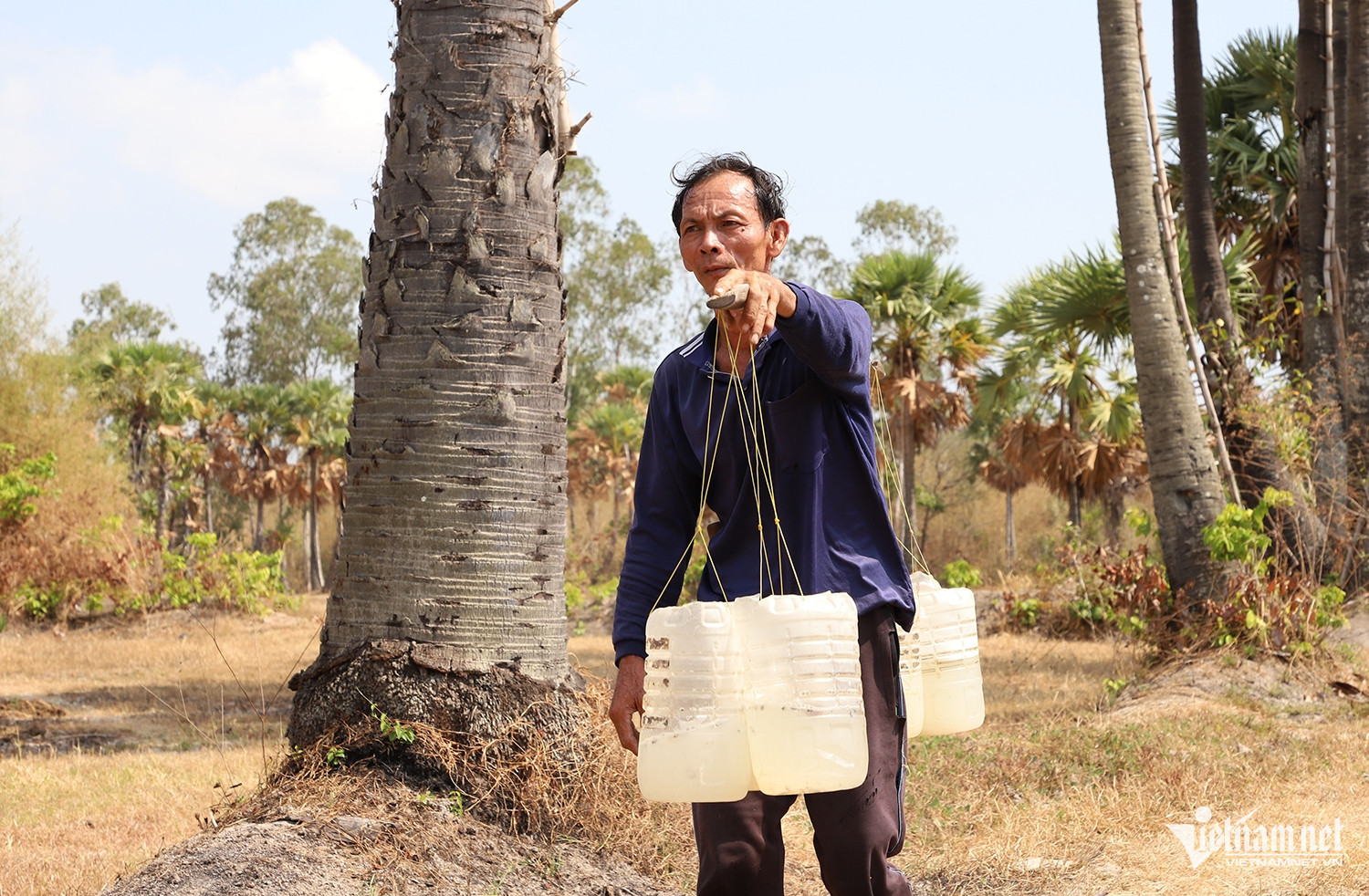
Tong explained that with about 50 rented trees, he can collect over 300 liters of sap during peak season, earning between USD 28-32 per day. However, this “swinging in the sky” job depends heavily on the weather - heavy rains mean no earnings.
The harvesting is grueling, but the sugar-making process is just as demanding. At his fiery hearth, Chau Kha (39, of Tan Loi commune, Tinh Bien district) swiftly filters the fresh sap through a cloth before pouring it into three large woks.
According to Kha, the fresher the sap, the better the sugar. Sap left too long turns sour. Sugar makers must vigilantly stir the sap for three to four hours using a paddle-shaped bamboo stick until it thickens.
Once thickened, the wok is removed from the fire, and the mixture is stirred continuously until it turns a signature bright yellow. It is then poured into molds or containers for sale to traders.
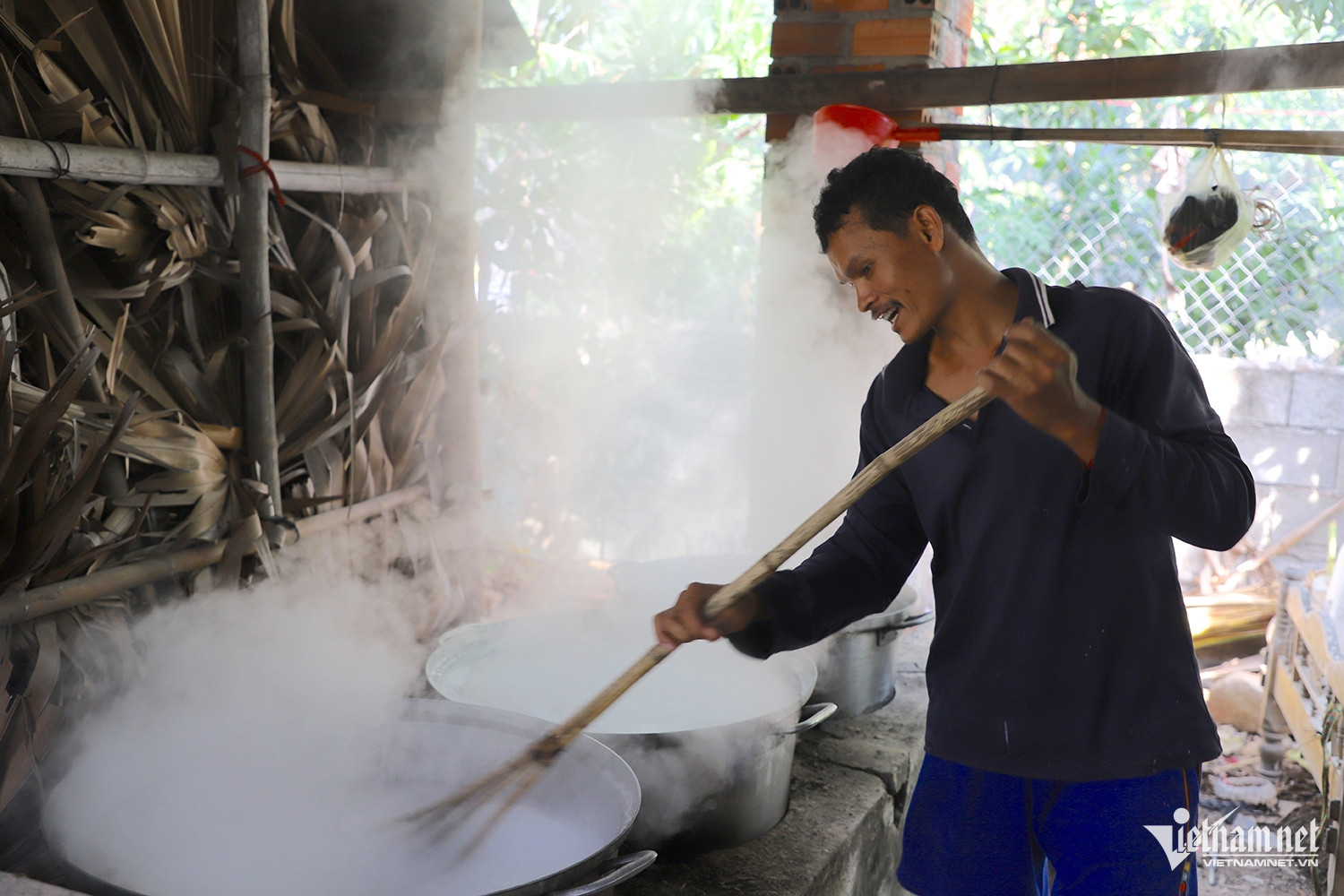
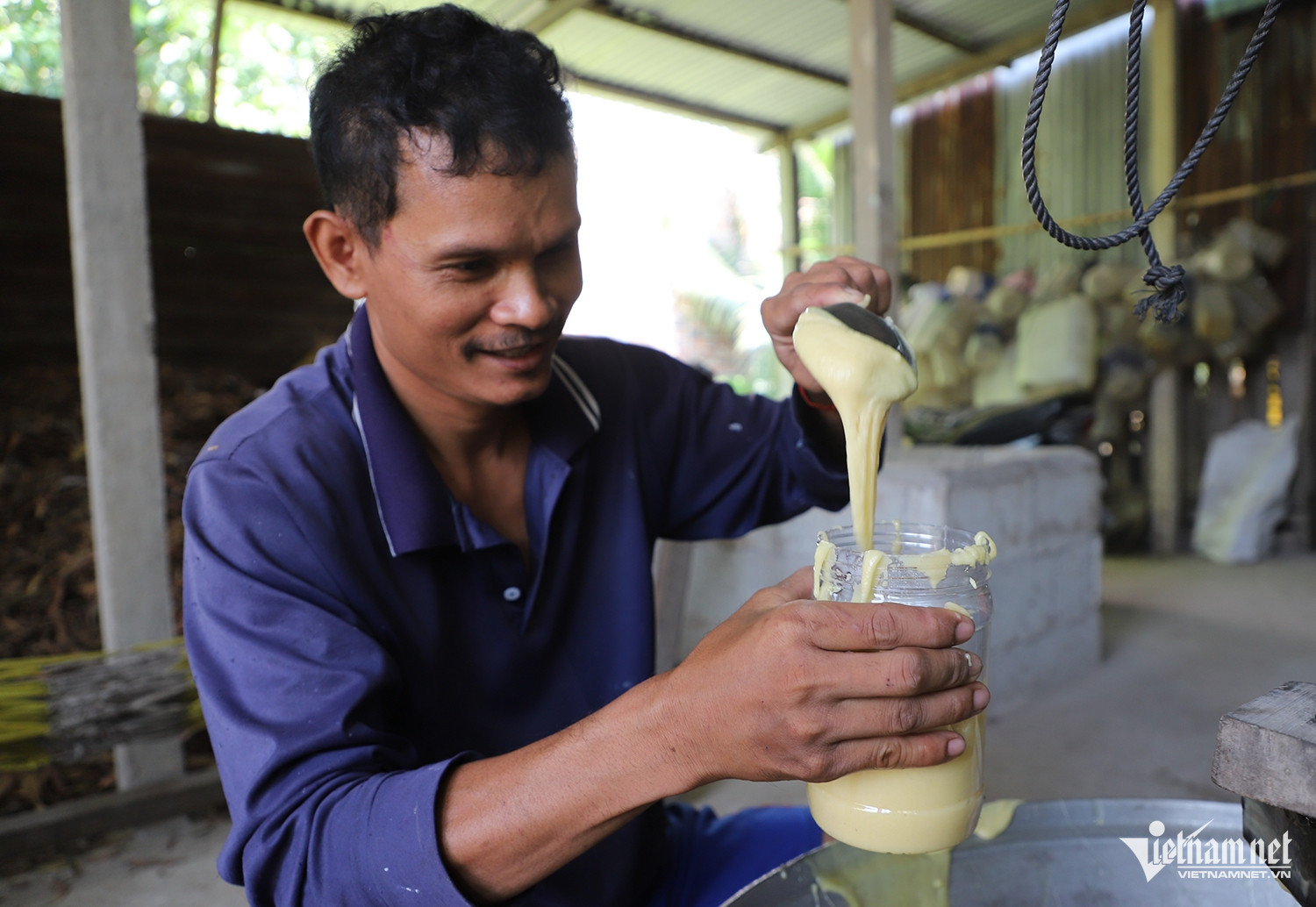
“Our family has about 20 trees. On average, we cook 15 kilograms of sugar daily, and more than 30 kilograms during the peak season. We sell it for USD 1.10-1.18 per kilogram. It usually takes 6–7 liters of sap to produce one kilogram of sugar. Managing the fire properly at each stage is crucial for the quality. I use dry eucalyptus leaves collected from forest edges - they burn easily and cost nothing,” Kha shared.
According to An Giang’s Department of Agriculture and Rural Development, the Bay Nui region has around 60,000 sugar palms, with nearly 2,000 households and establishments involved in sugar production. Each year, they supply about 6,000 tons of sugar to the market.
According to Truong Ba Trang, Deputy Director of An Giang’s Department of Culture, Sports, and Tourism, this achievement results from the dedication of local authorities and especially Khmer artisans who have persevered in preserving their craft despite modern economic pressures and competition.
To truly revitalize Khmer sugar-making in Bay Nui, Trang emphasized the need for continued government support in creating favorable policies, providing vocational training, and finding markets for their products. Promoting tourism in traditional craft villages could also help provide sustainable livelihoods.
Moreover, Khmer communities must continue to protect their traditional craft, preserve cultural heritage, and expand marketing efforts - especially through social media and online platforms.
Tran Tuyen